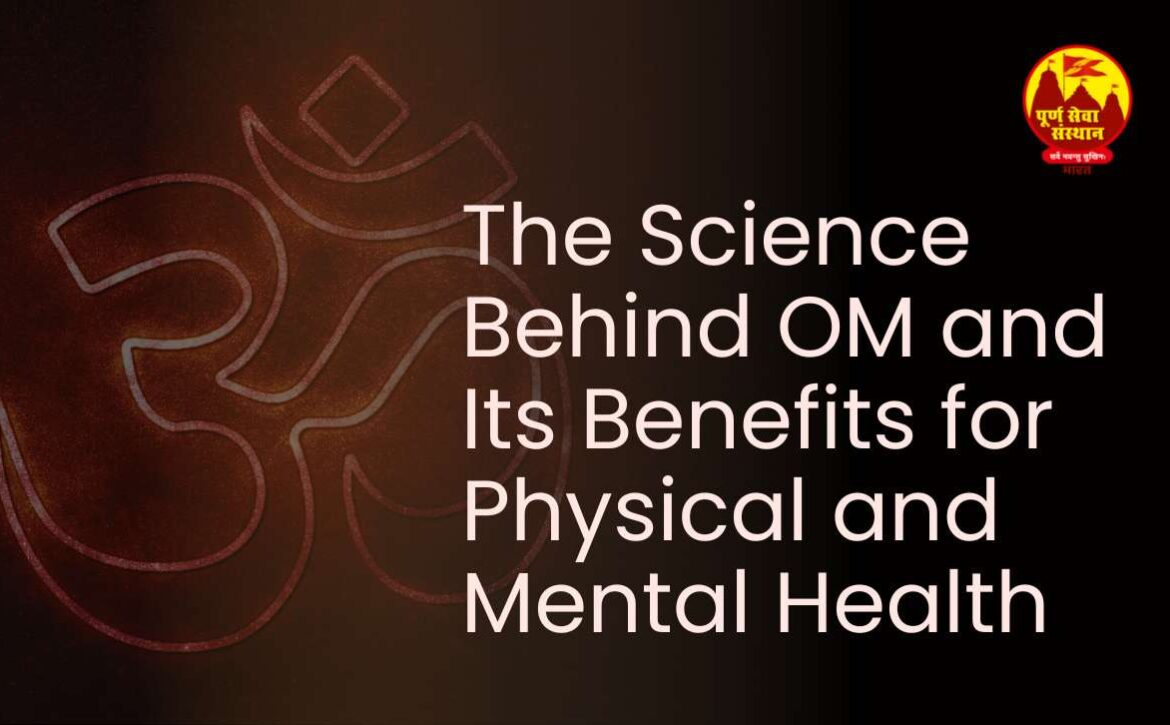The Science Behind OM and Its Benefits for Physical and Mental Health

OM (pronounced as “A-U-M”) is a spiritual practice that involves chanting a single syllable, typically “om,” repeatedly. It is an ancient Indian meditation practice that has been used for thousands of years and is still popular today. It is considered a mantra, a sound or phrase repeated to aid concentration in meditation.The sound of OM is believed to represent the vibration of the universe and the connection of all things. The practice involves the repetition of a mantra or sounds to achieve a state of mental calmness and physical relaxation.
A brief history of OM
OM has been around for thousands of years and is deeply rooted in the spiritual traditions of India. The practice of OM is mentioned in the ancient Hindu scriptures, the Upanishads, which date back to around 800 BCE. It is also a central practice in yoga, a system of physical and spiritual practices that originated in India over 5,000 years ago.
Importance of OM in modern times
In modern times, OM has gained popularity as a way to reduce stress, improve mental health, and promote overall well-being. With the growing interest in mindfulness and meditation, OM has become a popular form of meditation in Western countries. It is now practiced by people of all ages and backgrounds, from corporate executives to stay-at-home parents.
The Science Behind OM
What happens in the brain during OM
Research has shown that OM can produce changes in the brain that are associated with relaxation and reduced stress. Studies have found that when people practice OM, their brain waves shift from the beta waves of an active mind to the alpha and theta waves of a more relaxed state.
- Changes in brain waves
Beta waves are associated with an active, alert state of mind, while alpha and theta waves are associated with a more relaxed, meditative state. The shift in brain waves during OM is thought to help promote relaxation and reduce stress.
- Increased activity in the prefrontal cortex
Studies have also found that OM can increase activity in the prefrontal cortex, the part of the brain responsible for decision-making, attention, and concentration. This increased activity may explain why OM has been found to improve cognitive function and attention.
Effects of OM on the nervous system
OM has been found to activate the parasympathetic nervous system, which is responsible for the “rest and digest” response in the body. This response helps to reduce stress and promote relaxation.
- Activation of the parasympathetic nervous system
OM has also been found to decrease activity in the sympathetic nervous system, which is responsible for the “fight or flight” response in the body. This response can lead to an increase in stress hormones and can be harmful to the body over time.
- Reduction in stress hormones
Studies have found that OM can reduce levels of the stress hormone cortisol in the body. Cortisol is a hormone that is released in response to stress, and high levels of cortisol have been linked to a variety of health problems, including anxiety, depression, and heart disease.
Physical benefits of OM
In addition to its effects on the brain and nervous system, OM has been found to have a variety of physical health benefits.
- Improved cardiovascular health
OM has been found to lower blood pressure, reduce the risk of heart disease, and improve overall cardiovascular health. This is thought to be due to the relaxation and stress-reducing effects of OM.
- Reduced inflammation
OM has also been found to reduce inflammation in the body. Chronic inflammation has been linked to a variety of health problems, including heart disease, diabetes, and cancer.
- Enhanced immune function
OM has been found to enhance immune function, which can help to protect the body against illness and disease.
Mental Health Benefits of OM
Reduced anxiety and depression
Studies have found that OM can reduce symptoms of anxiety and depression.
- Studies on the effects of OM on anxiety
One study found that individuals who practiced OM for eight weeks had significantly lower levels of anxiety compared to a control group. Another study found that OM can help reduce symptoms of anxiety in patients with anxiety disorders.
- Studies on the effects of OM on depression
OM has also been found to be effective in reducing symptoms of depression. A study conducted on patients with major depressive disorder found that those who practiced OM had significantly lower levels of depression and improved mood compared to a control group.
Improved cognitive function
- Studies on the effects of OM on attention and concentration
Research has shown that practicing OM can improve attention and concentration. One study found that individuals who practiced OM for just four days showed significant improvements in attention and performance on cognitive tasks.
- Studies on the effects of OM on memory
OM has also been found to improve memory. A study conducted on older adults found that those who practiced OM for six weeks had significantly improved memory compared to a control group.
How to Practice OM
Setting the stage for OM practice
To practice OM, you should find a quiet space where you will not be disturbed. Sit in a comfortable position, either cross-legged on the floor or in a chair. Close your eyes and focus on your breath, taking deep breaths in through your nose and out through your mouth.
- Basic OM technique
To practice the basic OM technique, repeat the sound “OM” out loud or in your mind, focusing on the vibration of the sound in your body. You can repeat the sound for a set amount of time or until you feel relaxed and calm.
- Advanced OM techniques
There are many advanced OM techniques that you can explore once you have mastered the basic technique. These include chanting OM with a group, visualizing the sound of OM, and combining OM with yoga poses.
Conclusion
OM is a powerful practice that can have significant benefits for both physical and mental health. It can reduce stress, lower blood pressure, improve cardiovascular health, reduce inflammation, enhance immune function, and improve cognitive function. OM has also been found to be effective in reducing symptoms of anxiety and depression.
If you are interested in trying OM, there are many resources available to help you get started. You can find classes and workshops in your local community or online, and there are many books and resources available to guide you through the practice.
While the benefits of OM are well-documented, the science behind the practice is still being explored. As more research is conducted on the effects of OM on the brain and body, we will continue to learn more about the many ways in which this ancient practice can benefit our modern lives.
About Poornseva Sansthan
Poornseva Sansthan is a non-governmental organization based in India that provides assistance to people without any discrimination and also promotes the teachings of Sanatana Dharma, which emphasizes finding our true roots and living an ethical way of life. The organization’s mission is to serve humanity with love and compassion, and their work is a testament to the positive impact of prioritizing service to others and embracing the wisdom of our cultural heritage.






